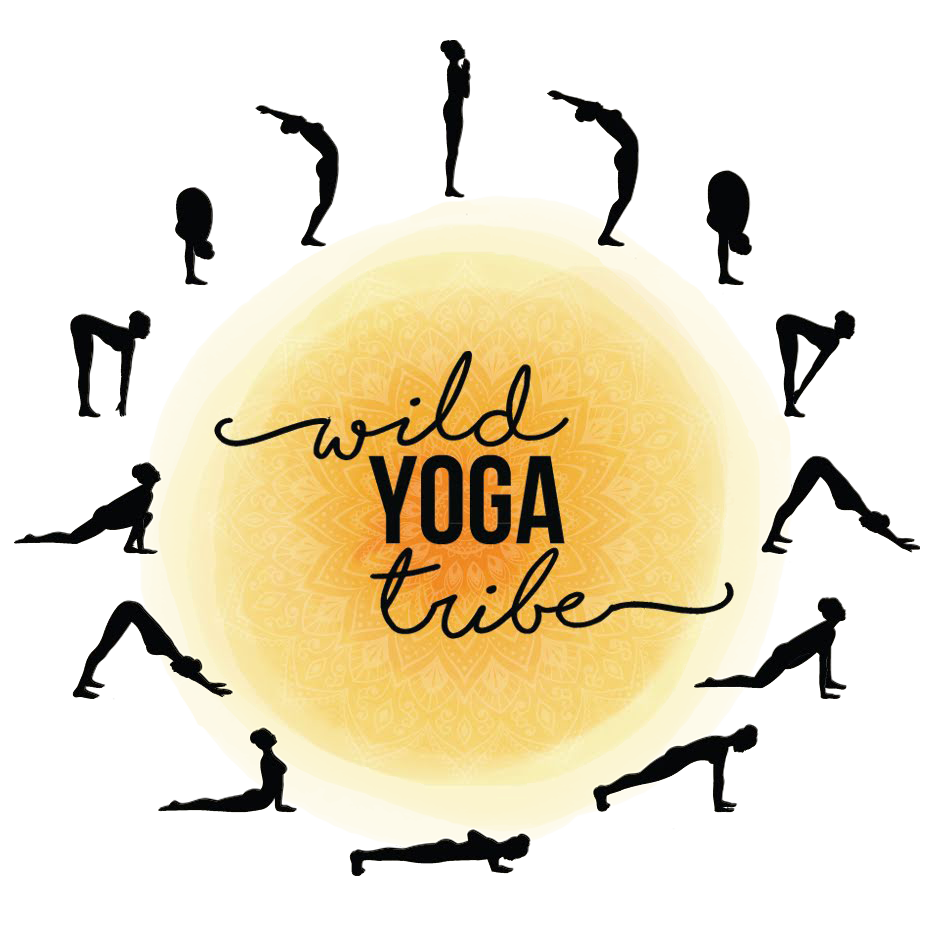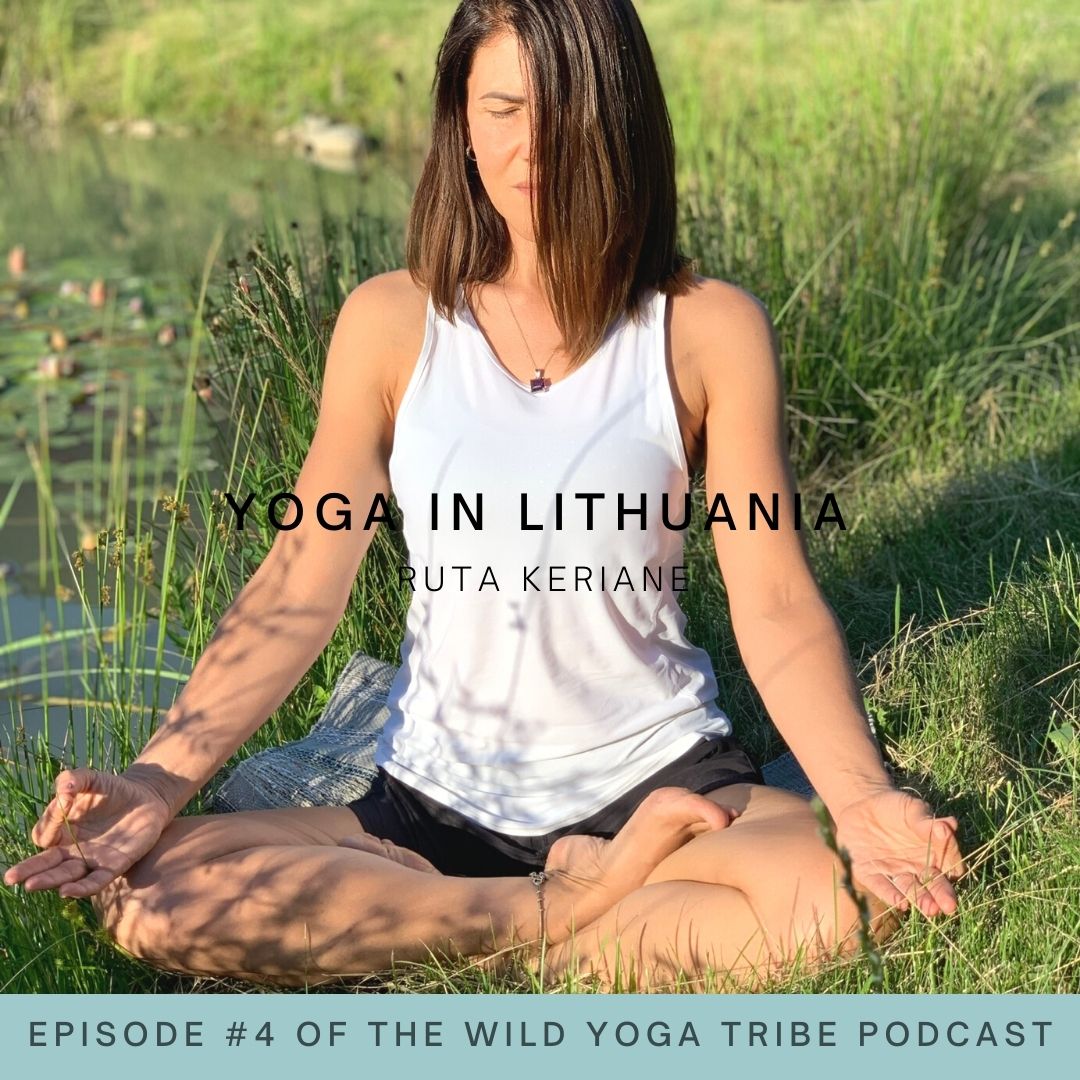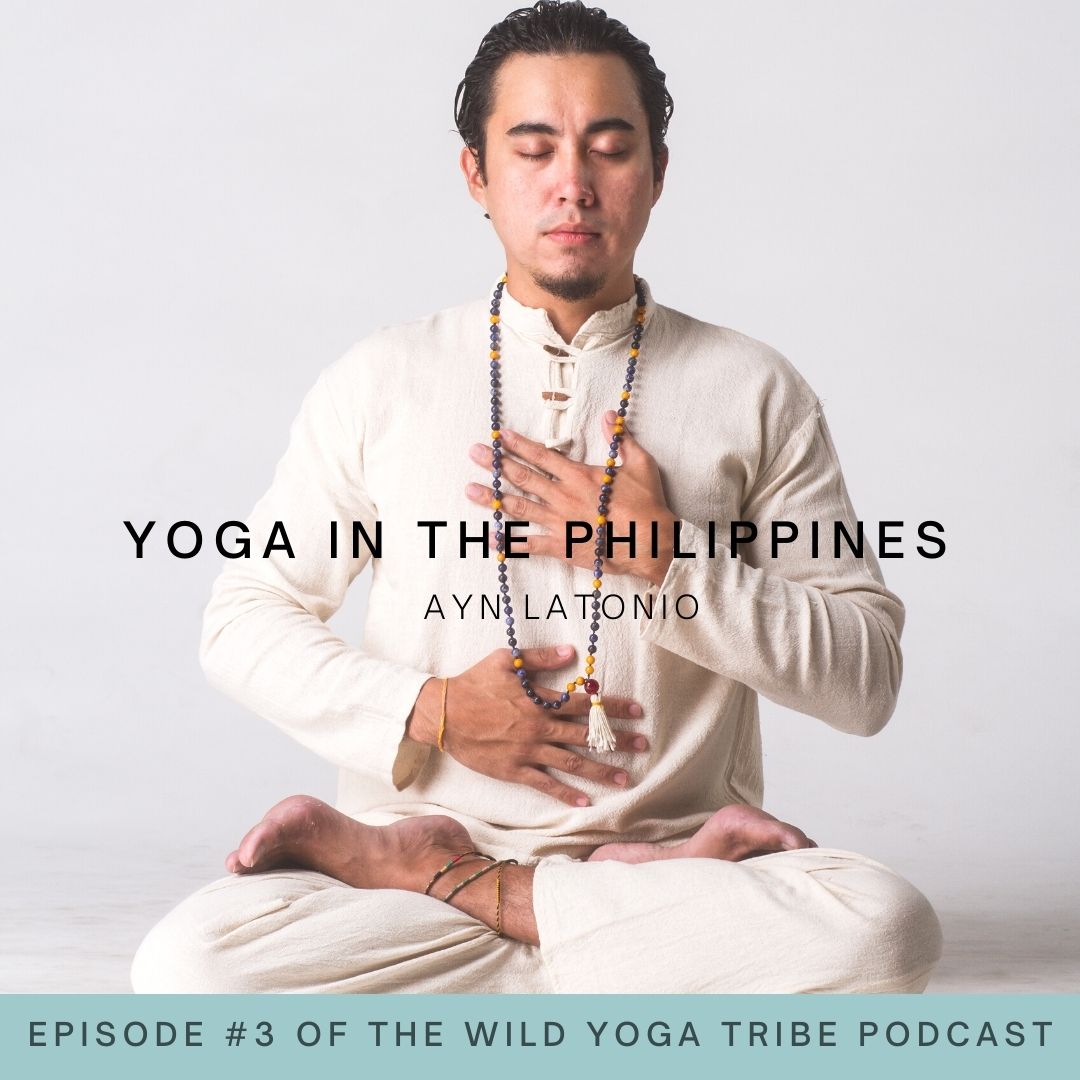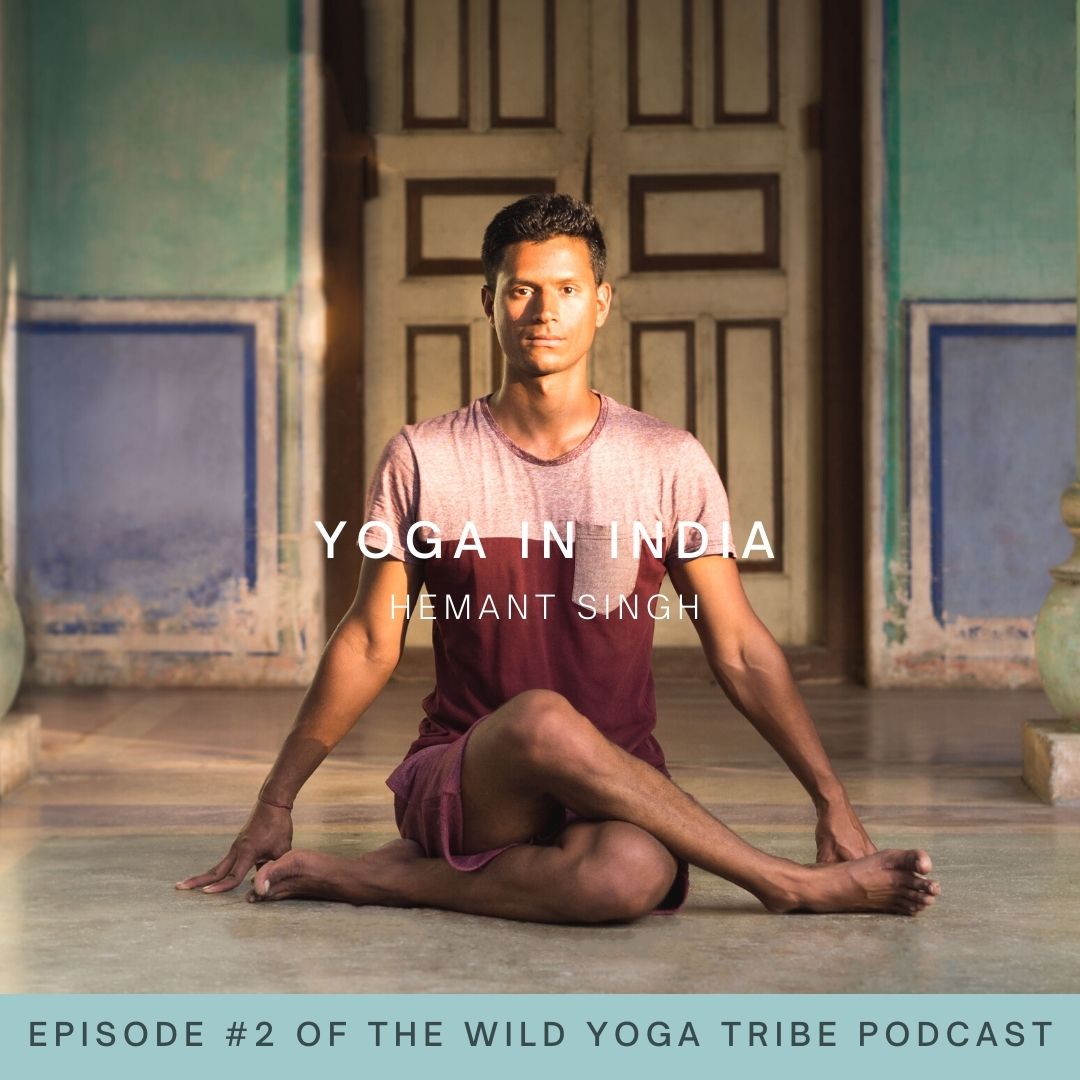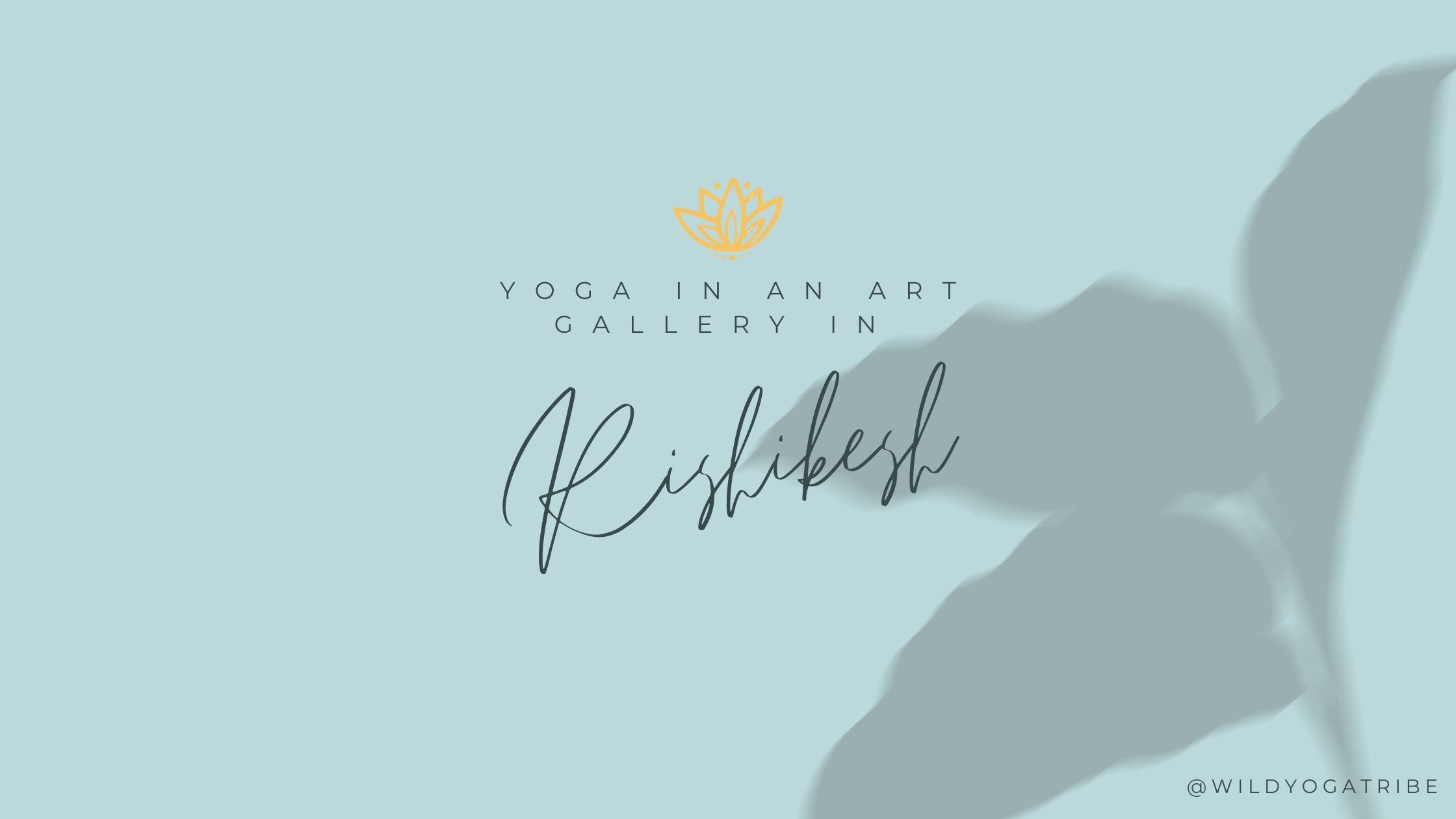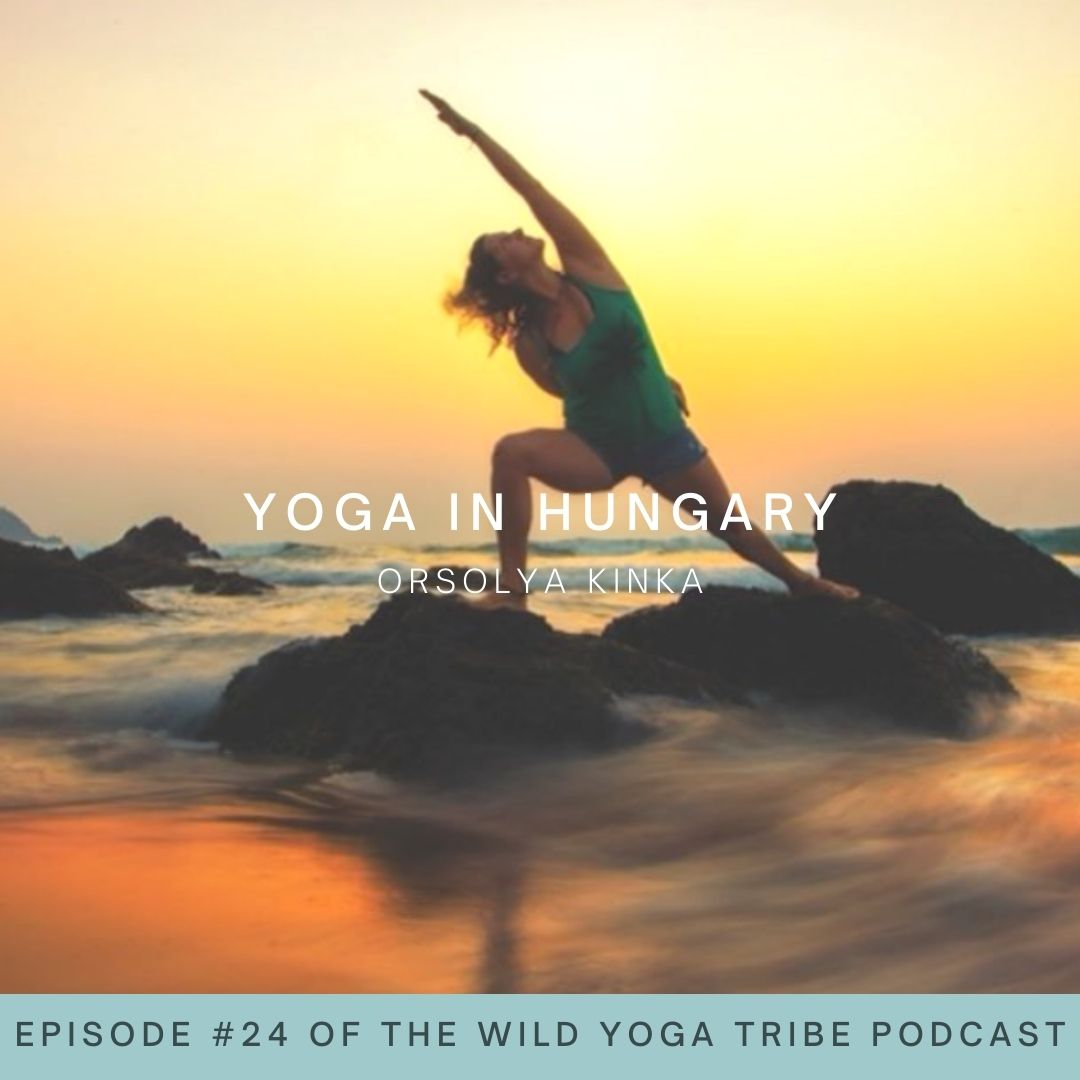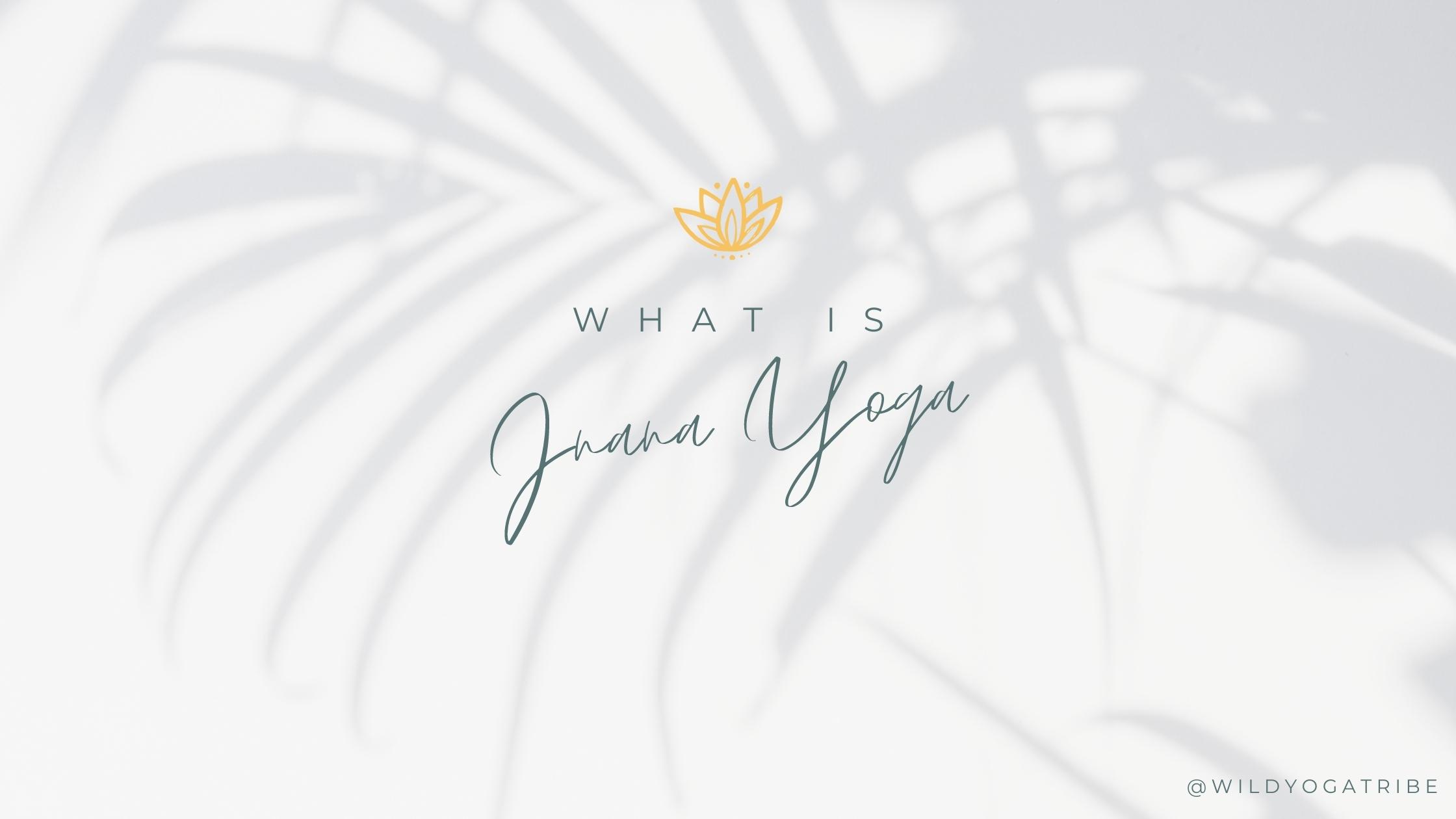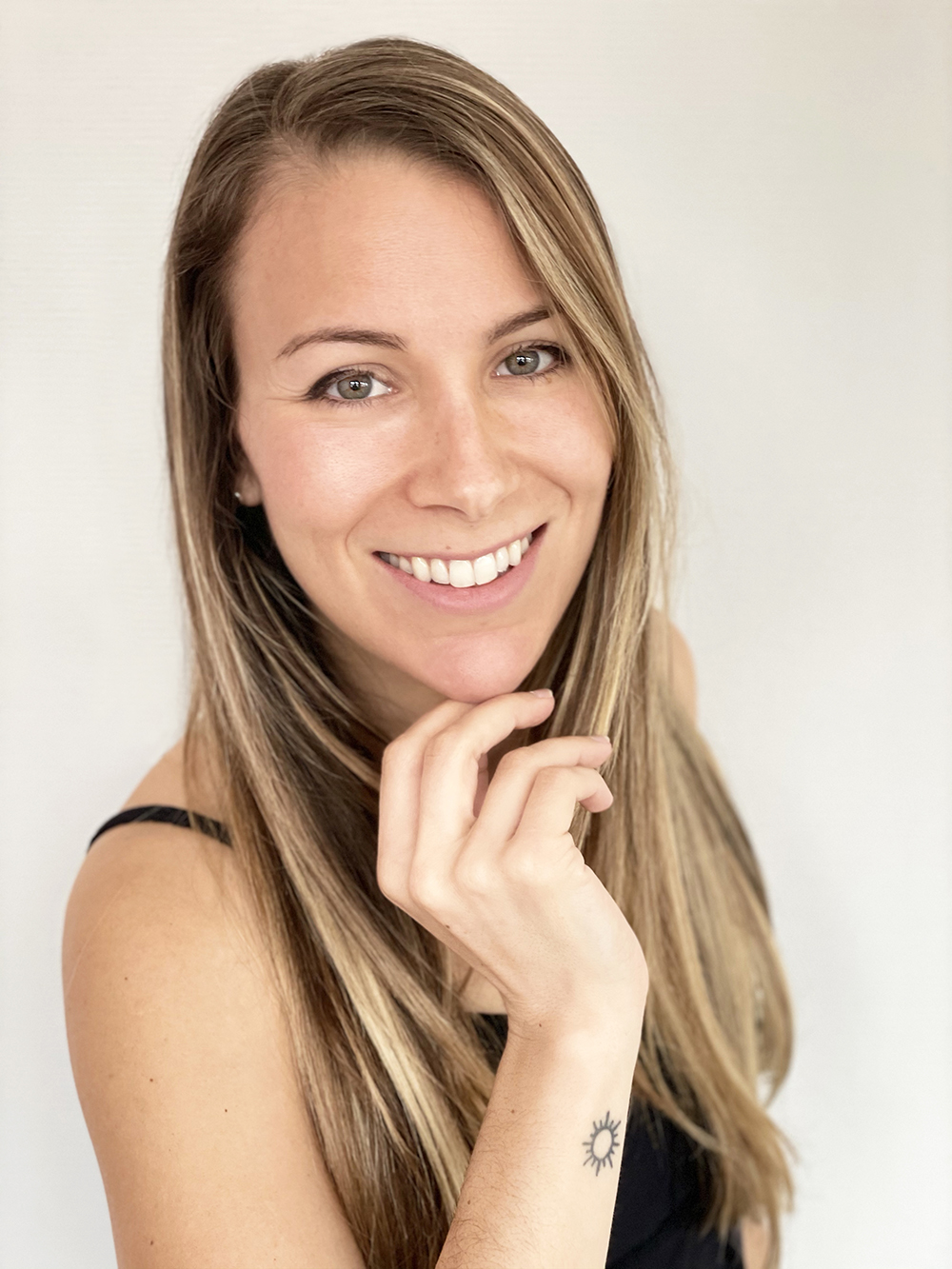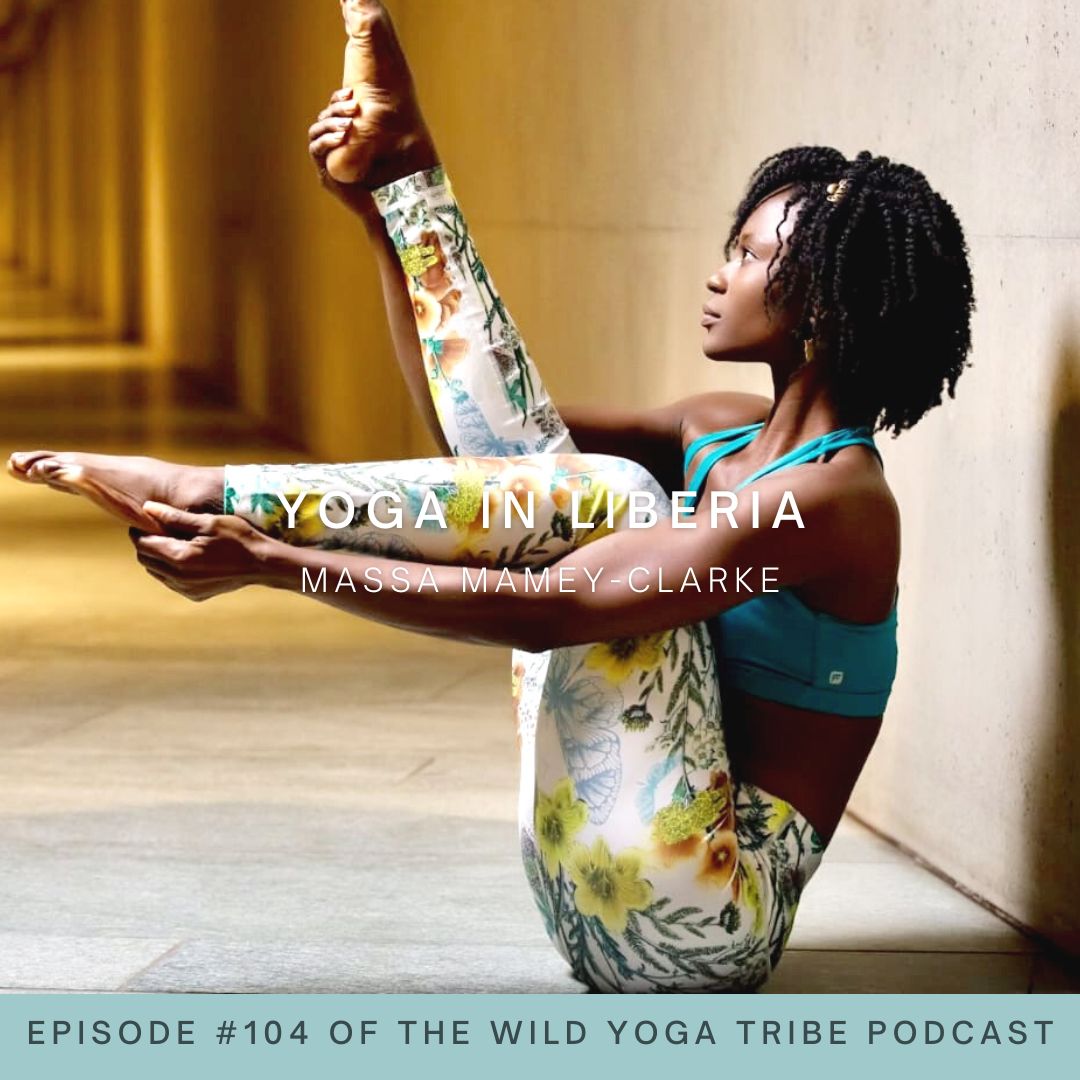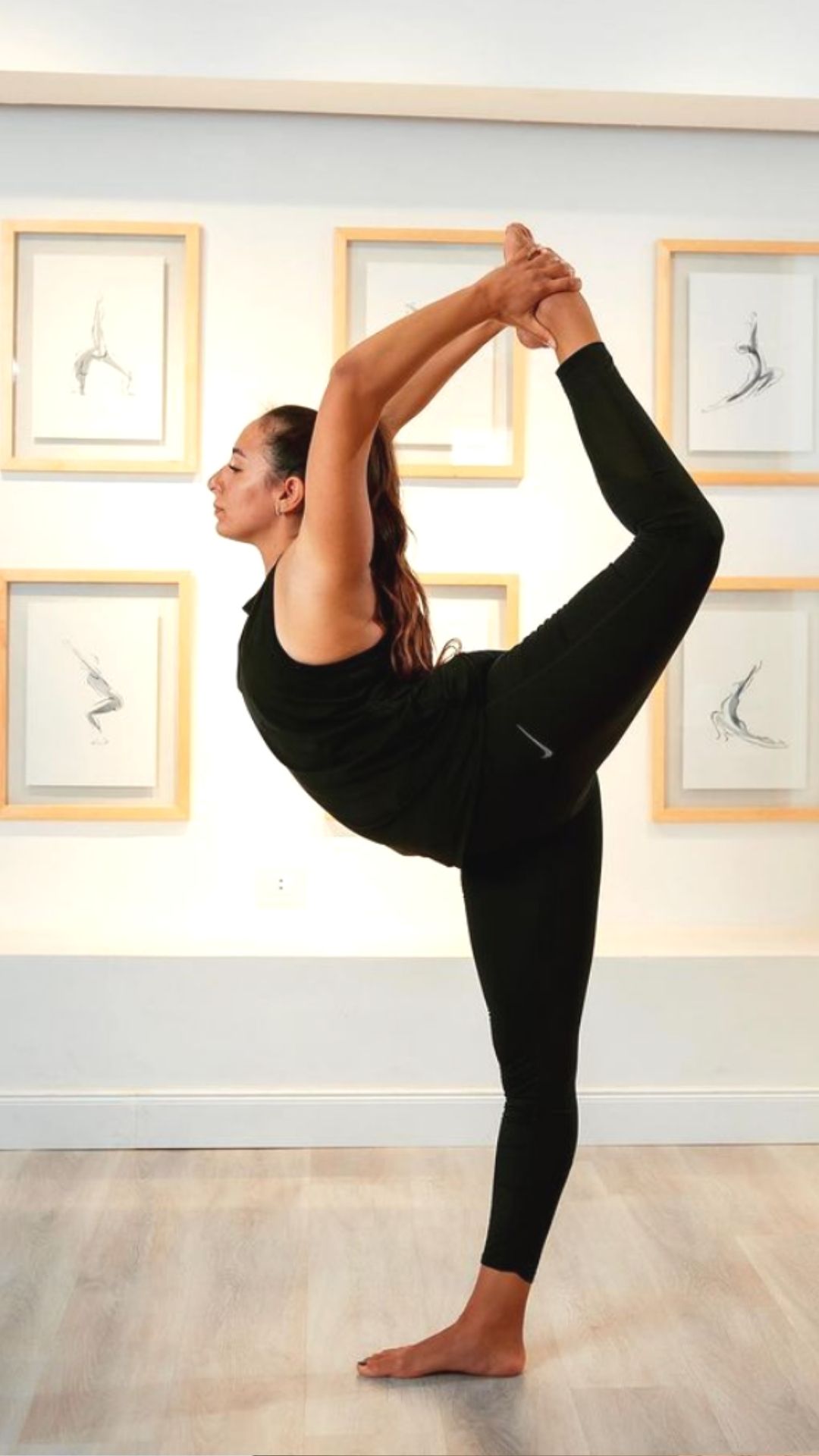
EPISODE #1 – YOGA IN EGYPT
Meet Farah Mostafa
Meet Farah Mostafa, a yoga teacher from Cairo who teaches us all about yoga in Egypt. Farah dives into what yoga has changed in her life, and how it has shaped her path. Welcome to yoga in Egypt!
Wild Yoga Tribe Podcast Episode #1 – Yoga In Egypt with Farah Mostafa
Tune in to the first official episode of the Wild Yoga Tribe Podcast! In this episode, I interview my dear friend Farah Mostafa who is from Cairo, Egypt. We first met back in July 2017 in Nepal Yoga Home during our 200hr Yoga Teacher Training. We immediately connected and were basically inseparable during our training. Fast forward a few years, and I was able to visit Farah in Egypt in the summer of 2019 and am planning another visit to see her in the fall of 2021!
Farah has a truly kind spirit. In this episode, you will get a feel for her energy, and for her teaching methodology and style.
Tell me more about Farah Mostafa
An architect and a former gymnast, Farah Mostafa jumped from one sport to another until she found peace, balance and awareness in yoga. Farah stumbled upon her first yoga class while recovering from a back injury, seeing the effect it had on her body, connecting and discovering more about her inner-self was the beginning of the journey. She started digging deeper into a more spiritual practice, then travelled to Nepal to study for her 200 hours teacher training. Farah is currently a full time yoga teacher pursuing her dream job in helping others with their journey to self-discovery and development.
What to expect in the Yoga in Egypt Episode
We will talk about what yoga is like in Egypt, whether it’s popular or not, and how she is teaching a very special student— a paralympic swimmer who is trying to qualify for Tokyo 2021. We’ll also touch on Sufi Yoga, a type of yoga that I had never even heard of before!
Moreover, Farah and I will dive into what yoga has done for Farah on a very personal level. Although she was a competitive athlete, a gymnast, Farah struggled with severe back pain for years, and ultimately herniated her spine which halted her athletic career. Yoga was a gift to Farah “I started going to yoga classes and I loved how it felt, not just physically but spiritually. I was so depressed about my injury. I was so stressed, and feeling so down. I loved how it made me feel. Even though I used to do a lot of sports and move a lot, I wasn’t really connected to my body… I’ve learned so much body awareness though yoga.”
I also want to share with you, dear reader—and listener too I hope!— my favorite moment of my interview with Farah. I asked Farah to define yoga for me. She defined yoga as alignment.
“Yoga means union in Sanskrit. It’s the union of the body, mind and the soul. Through this we get more aligned— aligned with our bodies, aligned with the moment, aligned with our breath. So alignment allows us to be more in harmony with our thoughts, our actions, our words— which makes us more intone with our purpose, intention, and values. When we are trying to find this harmony, things get aligned and put in the proper place,” says Farah.
A powerful definition, pulled from a powerful conversation!
Favorite Quote from Farah
“Thinking you can’t do yoga if you’re not flexible is like saying you can’t take a shower because you’re not already clean.”
What’s in the Yoga in Egypt episode?
Feel like skimming?
Yoga as a way to heal injuries and to truly connect with your body
What it is like to teach a Paralympic athlete yoga
What is Sufi yoga?
Yoga is alignment
Connect with Farah Mostafa
Instagram at @farahmostafa.yoga
Resources and References
Want more?
https://wildyogatribe.com/thepodcast/
Everything you need is just one click away! Check out all the resources here: https://linktr.ee/wildyogatribe
PODCAST TRANSCRIPTION
Read + Reflect + Respond
Wild Yoga Tribe Podcast Episode #1 – Yoga In Egypt with Farah Mostafa
Lily: 00:00:08
Welcome to the Wild Yoga Tribe Podcast. I’m your host, Lily Allen-Duenas. Together we’ll talk about the world of yoga, and we’ll talk to people from around the world. Join us for authentic conversations about the global yoga ecosystem, and yoga psychology, philosophies, and methodologies, from around the world. Inhale, exhale, we’re about to dive in.
Lily: 00:00:43
I’m so excited to be here, episode one, with Farah. She is from Cairo from Egypt and we met at Nepal Yoga Home in Kathmandu back in July of 2017. We were yoga teachers together in training, it was amazing, and we immediately bonded from the first day. I knew I wanted her to be my best yoga friend, and we have stayed in really good touch ever since. I visited Farah in Egypt, and we had an amazing trip together and we’re trying to organize an opportunity to get together again soon. So she’s with me here today and we are going to dive into yoga and yoga in Egypt and Farah’s journey. So Farah, thank you so much for being here with me today.
Farah: 00:01:28
Thank you so much for having me. So excited to do this.
What is your story?
Lily: 00:01:32
I am so excited to do this as well. Thank you. Episode one, yes we are trying out all these new technologies together and we’re learning, so of course Farah let’s dive in. Just to your story.
Farah: 00:01:45
Right, so I started yoga back in 2016. Yeah, by the end of 2016. Back then I used to do CrossFit, and I had a very bad lower back injury — two herniated discs. And I was in so much pain, and I didn’t get why I got injured. I started doing physiotherapy, and searching how to recover from this. By the end of my physio sessions, I was advised to do yoga. I started going to yoga classes, and I loved how it felt. I mean not just physically, but I loved how I felt spiritually. Because I was so depressed about my injury, and I was so stressed and was feeling so down so I loved how it made me feel. And it was so interesting to see how my body was, and I was very connected to it. So, even though I used to do a lot of sports, I did use it a lot but I wasn’t really connected to my body. And it’s interesting how I thought about many different things about my body. I always thought I was flexible and because I’ve learned so much body awareness through yoga, right? So I started learning how. “Yeah, if it’s my practice and I move with awareness, I get to understand how… what I’m exactly… what I’m feeling in different areas.” I discovered that I have very tight hip flexors. I mean, the areas especially around the gluteus maximus, are very tight. So anything that involves external hip rotation was very tight and restricted. So that was actually the problem and that’s what caused my back injury. So, I started researching a lot. So I didn’t go into more classes because I felt that I started healing my back through yoga, and that’s when I decided to take it further and deepen my practice. So, I went to Nepal Yoga Home to study, and I met you.
Lily: 00:03:48
That is amazing and I know you did gymnastics for so long so I was really surprised to hear you say that you didn’t think you were that flexible before you did a lot of gymnastics.
Farah: 00:04:00
Yeah but I mean, I thought I knew I was flexible but actually, our bodies are different. And each and every part in our body is different so you can say that I’m flexible all over, but I didn’t move with enough awareness. I didn’t understand and feel connected to my body. I had many imbalances that I wasn’t even aware of. I didn’t understand what was going on. I didn’t understand why if I moved this way, what, how, why I was feeling this way. So yeah, this is when I discovered that I have many imbalances that have been causing me many injuries for a very long time, but I wasn’t connected enough to my body to understand this.
What is yoga like in Egypt, culturally, societally, or just in general? Is it very popular?
Lily: 00:04:41
Yeah and yoga probably became the bridge. Yoga was the bridge that just helped you learn more and more about every individual part of your body and the muscle layers. I think that’s something we forget about too if it’s not just one layer of muscles that we’re working on. There are deeper and deeper levels that we can be connecting to as well for different benefits. Okay, so I would love to talk about yoga in Egypt. What is yoga like in Egypt, culturally, societally, or just in general? Is it very popular? I would love to dive into that with you.
Farah: 00:05:16
I don’t know if there’s a correct answer for this, but I will tell you that Egypt… the community in Egypt is very diverse. Regarding the Sufi… because it’s diverse socially and religiously and everyone and everything. Generally, it’s very popular now; you have lots of yoga studios. At first, you would find yoga classes just in gyms and now we have many yoga studios and classes and many retreats going on so it’s very popular. People are loving it. People are very curious to go and try. So it’s very popular nowadays. How is it regarded? Many people think that it’s about flexibility, just not yet. They don’t know when they go and try; they have not discovered the spiritual part. Some people are scared to try because of the spiritual part. Some people think that it’s related to Hinduism, so they’re kind of like, “No, it’s not related to my religion.” I’ve actually got a question about this once in a yoga class. I got this question once in the last four years that I’ve been teaching about, “How is it related to Hinduism and other religions? And how is it okay to practice it if she’s a Muslim and it’s not related to her practice?” And my answer was,
“It’s your own practice. It’s your own experience you can take it with you. You can practice it in a way that resonates with you, in a way that feels connected with you; and it will help you to be more connected, in your prayers and how you practice your own religion because it helps you align with your purpose more.”
So yeah that’s a point of view. And another point of view because we have Sufism in Islam, smany people are now practicing Sufism. And it’s so related to yoga in a way that Sufism encourages you to meditate, to be connected to be, to be aware and present. So it’s kind of related. One of my favorite teachers, Eileen Alfie, teaches Sufi yoga. He does Sufi Mantras that are related to it and people resonate with it because this is how they practice their religion. Yoga is the bridge between both.
Lily: 00:07:40
I’ve never heard… So with a Sufi yoga that’s going on, is that Sufi Asana practice as well or is it only the meditation or Pranayama elements?
Farah: 00:07:50
Both. Meditation, Mantras, and asana practice. So this is how he does it, I mean, I don’t teach it personally, but I’ve been to his classes and it’s amazing. He does everything. And it’s beautiful.
Lily: 00:08:08
So it just feels like a very uplifting, spiritual experience going to one of those classes?
Farah: 00:08:11
People will love it. I resonate with it because it’s so personal and intimate and it’s related to their language and religion. And yeah, it’s a very personal experience and yoga is connecting both together. So, yeah.
Is there anything different in the class that we would be teaching just a half-hour Vinyasa-style class?
Lily: 00:08:30
Wow, I mean I’m also trying to envision it like a Sufi yoga class. Is there anything different in the class that we would be teaching just a half-hour Vinyasa-style class? Is it different in terms of the lighting the candles, the music, the energy like, can you just walk me through a little bit with that be like?
Farah: 00:08:50
So, the setting was normal. I’m not an expert — I just attended as a student. So the setting was normal. There was no music — it was just Sufi Mantras which is taken from sentences, praising God and thanking God. I mean it’s very related to how we practice Islam and what we say in our prayers. We keep saying the Mantras together and the energy, the vibrations are so amazing.
Lily: 00:09:23
And do you do the regular Sanskrit Mantras in your classes that you teach usually?
Farah: 00:09:28
Mostly, no. I think people like to understand what they’re saying. If they don’t really understand, they won’t feel connected to it; and with the poses too, the Asanas names. I have to explain or demonstrate in English, and then I say the Sanskrit words, and then I demonstrate and translate in Arabic. So, it’s too much to observe in one class.
Lily: 00:10:00
That would be three languages you’re bouncing around, that would be a challenge.
Farah: 00:10:03
So I feel that it’s easier to explain in English and Arabic and Sanskrit is too overwhelming so I personally don’t use Sanskrit.
Lily: 00:10:15
Okay.
Farah: 00:10:16
Yeah.
Are there any differences in your teaching style that you feel would be different than what we learned together in Kathmandu?
Lily: 00:10:19
And when you are teaching in Egypt, are there any differences in your teaching style that you feel would be different than what we learned together in Kathmandu? Have you adapted it in any way?
Farah: 00:10:29
Actually, yeah I have adapted and developed so much. But I mean it’s, I think it’s more related to the crowd, rather than the base because the crowd is always different. You have some beginners, you have regular practitioners, so you have to be teaching the people not teaching with the way that you love to teach. So it always depends on the crowd. What do they really need? Do they need to, to be adjusted all the time? Do they need to have their own space? Do they want to have someone explain everything to them or do they just want to have their own experience in silence? So, it’s always different, and it’s about the crowd.
Lily: 00:11:15
So speaking of the crowd or students, I did want to maybe bring up I think you have a very special student that you’re working with right now that you mentioned, on our last call together that I’d love for you just to tell everybody a little bit about. It just blew my mind. It’s such a unique experience, and such an honor to work with the student you’re working with. So I think I’ve given a good lead up.
Farah: 00:11:39
Okay, so I’ve been working with Eslam. Eslam is a swimming champion. Let’s cheer for him because he’s working too. He wants to qualify for Tokyo 2021. So, yeah, he’s, hopefully, reaching for him to go to the Olympics this year. We’ve been working together. He’s been advised by this mentor or his head coach to do yoga classes as part of his training program. And his main goal was to work on his mobility. He wanted to learn to practice more breathing. He wanted to work on his imbalances because Eslam has been on a wheelchair for a couple of years.
Lily: 00:12:22
Is that an injury? Is it permanent?
Farah: 00:12:24
Yes, it’s permanent. And he actually wants to participate in the Paralympics so he hasn’t made it this year. So, yeah, he’s such a fighter. He’s amazing. He’s always open to do new things. He’s always very dedicated. He always shows up to class with a big smile, and he’s very dedicated and giving 100% all the time.
Lily: 00:12:49
I think what was the most amazing too is I’ve never worked with someone who is in a wheelchair, who’s paralyzed from, you said the chest down right like right at the top of the ribs or…
Farah: 00:13:00
From the bottom of the ribs, and all the way down. So, yeah, it’s been a very interesting experience because there were lots of modifications. There’s lots of… You’ll have to adapt many, many of the practices, poses and movements to suit him. Yeah, and it’s been very eye opening to understand the body even more because sometimes you feel that, “I’m not using this right but when I really understand. No, I have to use it this way.”
Lily: 00:13:37
Yeah, it has like a hyper awareness, the twisting, are these different poses I agree where I wouldn’t think I’m utilizing or I’m pulling from that area. I mean what an incredible opportunity to understand body mechanics and anatomy even better, and to greatly assist him and his physical goals, and his… his desire probably to increase certain muscle flexibility levels or elasticity levels or strength levels. So I feel like for you must be just, just getting so fine tuned just going down to like just all the way down to the I guess the base level or the most molecular I (Can I say that?) and most molecular level of Asanas. It’s incredible to me. So, I did want you to fill in a little blank for me. So, yoga is…?
Farah: 00:14:29
Alignment.
Yoga is alignment
Lily: 00:14:31
Yoga is alignment, okay tell me more.
Farah: 00:13:34
Yeah, so yoga means union in Sanskrit, right. So it’s the union of the body of mind and the soul. What I mean, through this, we get more aligned. We get more aligned with our bodies, aligned with the movement, aligned with our breath. So alignment allows us to be more in harmony with our thoughts, our actions, our worth. Which makes us more in tune with our purpose, intention, and values. So, when you’re always trying to find this harmony, things get aligned and things get in the proper place.
Tell me what is something you think people get wrong about yoga?
Lily: 00:15:14
Wow that was a beautiful definition. I love that. So now that we’ve defined yoga, tell me what is something you think people get wrong about yoga?
Farah: 00:15:26
Yeah, so this is the most common thing I get. I really wanted to try doing yoga, I want to go to yoga classes but I’m not flexible, so I don’t think I can do yoga. So, it’s definitely not about being flexible, it’s your own practices, it’s your own experience. It’s not just, it’s not just a physical practice, you’re doing it for more deeper reasons. There is no competition, there’s no judgment. So, yeah. I still get this a lot and I always say, being flexible, not doing yoga because you’re not flexible, is like saying that’s you… you can’t take a shower because you’re not clean.
So what would you say, Farah, is the most powerful thing that yoga has taught you?
Lily: 00:16:14
That’s a very good way to put that, I like that. That’s awesome. Okay, so what would you say, Farah, is the most powerful thing that yoga has taught you?
Farah: 00:16:26
I would like to understand myself more and more every day. And with understanding myself, I’m more in tune with my emotions. I’m understanding myself, my emotions, even better. I’m accepting many things about myself. Because, yeah, as I said I didn’t even understand my body. I’ve been an athlete and I didn’t get how I’m feeling physically. I’m not connected to my body, so it’s made me understand my body and my heart even more and the truth, my true self, my inner self. So, yeah. With this understanding, by being more aligned with myself, I’ve got to accept many parts of myself even more and it’s an ongoing practice and yeah it’s constant work.
Lily: 00:17:18
I agree. I think that’s so true that yoga provides the space to go inside. Like it’s a time where you’re not so focused on the external world or what’s going on, you know on your phone or in your office or in your family. It really is time just for you to kind of get to know yourself better and what’s going on and I loved how you said that it helps you understand your emotions better and brings you more awareness because I think when we have that space, even if it’s 20 minutes of yoga or an hour of yoga, we have that space that’s just for you. You kind of get in a little bit deeper into who you are on the internal level. And it is incredible also the information it does give us about our bodies because I agree I was a soccer player for a decade and I felt like I was doing a sport every day of the week for years but I could tell you “Oh, My knee hurts” or, “Oh, I am sore in my quads” I could absolutely tell you that basic information. I felt like I could have that down but the subtler layers of the body, as you said, like the external hip flexors, or I can now tell when something in like my adductors feels a little out of balance. It almost feels like we’re able to just, you know, go more and more granular to smaller and smaller levels and as we’ve mentioned earlier when you’re working with the swimmer… This, you are going so granular, I can’t, I… I’m almost envious, you have this opportunity and it’s incredible to me, because you do reach a level I feel like in yoga maybe you agree, maybe you don’t where you kind of forget what it feels like maybe just to touch your toes and not be able to. You know, you forget what part of your body is tensing with when you’re, or what is resisting that right if you can just do it so easily. So, this I feel like it’s an opportunity to go back, back, back, back, back to the beginning and investigate like “How are you learning about that?”, or is it just a huge line of communication. It’s private yoga classes with him, I assume, right?
Private yoga classes with and a Paralympics athlete
Farah: 00:19:33
Yes. And 100% yes. This is actually very true. And I’ve noticed this because he’s communicating really well, and he’s always asking me, and expressing, “I’m feeling this here and I’m feeling this there”. And yeah, when I tried myself I really got that our bodies are really different. I mean his… yeah, maybe some, someone is stronger in one part that I’m weaker in other parts, and so on. So, the same pose with the same exact alignment we… every one is experiencing differently. So, when you get to work one-on-one with someone and communicate, well you get to understand that our bodies are really diverse and different, and maybe you think that one pose with the same alignment, would, would make us feel in a certain way and you would understand that it’s so different because we have different bodies with different histories and different practices and movements. So yeah, this is definitely one thing that I’ve learned from Eslam because he’s always communicating, and we’re always talking and we’re always trying to adapt, and find out and research together about things. And, for example, we had to — getting back to this experience — we’ve discovered that what works for him more is bilateral movements instead of unilateral movements. So it’s been… we’ve been very creative with our practice because we want to adapt it more to something that’s fitting him better. We had to adopt many of the practices to be bilateral so you can support him, his body with one hand and do the practice with the other hand, of keeping the alignment the same because we don’t want him to borrow flexibility from the other type. So yeah, there’s lots of thinking and as he said, like micro-awareness and micro-study about the body. Yeah, it’s been very interesting.
Lily: 00:21:44
And you just did an extra yoga anatomy course, didn’t you?
Yoga Anatomy Course
Farah: 00:21:47
Yeah, I’m actually still studying. Yeah, it’s on Yoga Anatomy, by David Keil. And it’s so interesting, I love it. I mean, every time I study I get to know. I feel like, “Wow, everything’s all going on in my body at the same time and I’m not even aware of it”. So it’s amazing. Our bodies are really amazing, and it’s so good to learn about.
Lily: 00:22:10
Absolutely, wow. That’s so cool. I’m glad you’re doing that course, and I definitely need to take another anatomy course too because, as we’ve been saying you can go deeper and deeper micro and macro micro levels and there’s always more to learn, I think that’s a, another thing that yoga has taught me is… there’s always more to learn. I think I’m going to be just as we’re both yoga teachers, I feel like I’m going to be a yoga student for the rest of my life too.
Farah: 00:22:35
Exactly — 100%. And I love that we share this together, always. We always were always studying and sharing our experiences with each other so it’s good to have a teammate like you.
Lily: 00:22:49
I know and I mean I totally agree. I think that’s crucial. It’s so vital that you have someone, another yoga teacher, or a great friend who’s into yoga who you can just kind of go back and forth with and you can say “Oh I’m learning this.” When I was having some problems with my back, I was concerned that maybe I slipped a disc. And you had herniated your back before I mean we absolutely were able to help each other and you gave me so many tips and tricks on the bilateral that was really key for me as well doing more bilateral front forward folds. I’m very grateful for you, very grateful.
Memories from Nepal Yoga Home
Farah: 00:23:23
So lucky. I mean I’m so lucky that I met you at the beginning of my journey. Yeah, we’ve been sharing a lot ever since. And remember when you used to adjust and assist each other in class and you have, we had one side better than the other and I had the opposite one and we used to like assist one another in one for it and the other one, the other side was my bad side and you, you come to the mat…
Lily: 00:23:45
Absolutely. Wasn’t that Marichyasana? I think that was like one of the, you know, binds. Great memory. Yes, we did have to help each other, grab the bind with the hand on. That’s an amazing, good memory. And I’ll never forget when I very excitedly was trying to learn a little bit of Egyptian Arabic with you at Nepal Yoga Home, and you taught me a few phrases and I mixed one up a little bit but you’ve gotten into a very impressive yoga pose, and I exclaimed, “nyeem on,” and you started laughing so hard you fell right out of the yoga pose. But I had told Farah, “nice haircut.” And I meant to be saying, “Great job!”, but she has beautiful hair. You have to check out Farah’s hair. She has such a great haircut that could work any day of the week.
Lily & Farah: [laughs]
Lily: 00:24:42
Thank you so much for joining me on the wild yoga tribe podcast and being the very first guest here. It’s been such a joy to get to be with you.
Farah: 00:24:52
Thank you, Lily. I enjoyed this so much, as I always enjoy, enjoy our talks. So, thank you for having me.
Wild Yoga Tribe Podcast Outro
Lily: 00:25:03
Thank you so much for tuning into my conversation with Farah Mostafa from Cairo, Egypt. She’s a true delight and a beautiful spirit, and I’m so grateful to call her a wonderful friend. I hope you enjoyed learning more about yoga in Egypt, Sufi yoga, and other really interesting things about the yoga scene in Egypt. If you want to check out a little bit more, tune into the show notes, head over to my website wildyogatribe.com/podcast, and you will get to see some links to which talks about, you’ll get some resources and more information on Farah, so check that out over there and thank you for the gift of your attention, intention, and presence.
[Music Outro 00:25:49]
Lily: 00:25:50
So if you have any questions, I would love it if you’d reach out to me — the best way to do that is on social media @WildYogaTribe. I’m on Instagram and Facebook and YouTube — I do have awesome YouTube videos up that are recordings of classes, so you’re welcome to join me there. I’m on Insight Timer as well as a meditation teacher, so you can listen and tune into some Yoga Nidras and meditations for free. And I do have a website, www.wildyogatribe.com, that is packed full of great resources. It’s a place to come together as a community. So I hope you do check it out. And of course if you would hit subscribe here, wherever you’re listening to this podcast, it would mean the world to me and it would also mean that you never miss an episode. They come out every week, so I would hate for something to you know slip through the cracks. So hit subscribe, and if you feel called, leave me a little review. I’d love to hear your feedback, and it would mean, you know, it just means a lot, so thank you guys so much for tuning in, checking it out. Excited to see how this journey unfolds to you all.
[End Transcription 00:26:58]
[Music Outro 00:26:58]
Copyright © 2022 Wild Yoga Tribe LLC. All rights reserved. Transcripts are generated using a combination of speech recognition software and human transcribers, and may contain errors. Kindly check the corresponding audio before quoting in print to ensure accuracy.
The Wild Yoga Tribe, LLC, owns the copyright in and to all content in and transcripts of the Wild Yoga Tribe podcasts, with all rights reserved, including right of publicity.
What’s Okay
You are welcome to share an excerpt from the episode transcript (up to 500 words but not more) in media articles (e.g., The New York Times), in a non-commercial article or blog post (e.g., Elephant Journal), and/or on a personal social media account for non-commercial purposes, provided that you include proper attribution and link back to the podcast URL. For complete transparency and clarity, media outlets with advertising models are also welcome to use excerpts from the transcript per the above.
What’s Not Okay
No one is authorized to copy any portion of the podcast content or use Lily Allen-Duenas’ name, image or likeness for any commercial purpose or use, including without limitation inclusion in any books, e-books, or on a commercial website or social media site (e.g., Instagram, Facebook, etc.) that offers or promotes your or another’s products or services. Of course, media outlets are permitted to use photos of Lily Allen-Duenas from her Media Kit page or can make written requests via email to receive her headshots folder.
